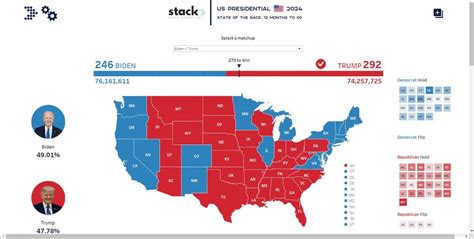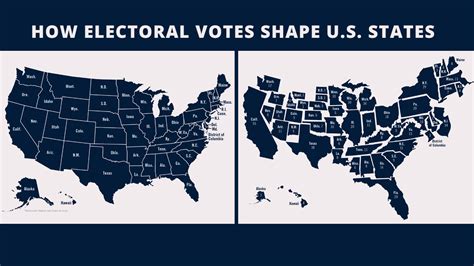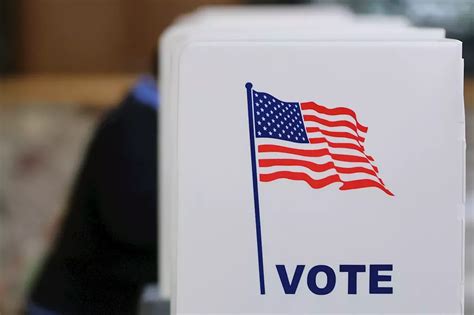Explore factors influencing voter trends, demographics, historical influences, social media’s impact, and predictions for Election 2024 in this insightful analysis.As the countdown to the 2024 election intensifies, understanding popular vote trends becomes crucial for candidates, policymakers, and voters alike. Our comprehensive analysis delves into the complexities of these trends, exploring the multifaceted factors that influence voter decisions. From demographic shifts to historical contexts, we will illuminate how past elections inform current sentiments. Additionally, we’ll assess the growing impact of social media on shaping opinions and mobilizing voters. By gaining insights into these dynamics, we can better predict what the future holds for the election landscape. Join us as we navigate the intricate web of influences that will undoubtedly shape the upcoming electoral process, equipping you with the knowledge to understand what these trends mean for Election 2024.
Understanding The Factors Influencing Popular Vote Trends
Several key factors contribute to the changing dynamics of popular vote trends leading up to Election 2024. Acknowledging these influences is essential in drawing insights into how voters may behave in the upcoming election.
One of the primary factors is the state of the economy. Voters often base their decisions on economic performance, including employment rates, inflation, and public sentiment regarding personal financial situations. If the economy is thriving, incumbents are generally favored, whereas economic downturns can lead to shifts in voter allegiance.
Another critical aspect is issues of social justice and equality. Movements advocating for racial equality, gender rights, and LGBTQ+ rights are reshaping voter priorities. These movements significantly mobilize younger voters who tend to prioritize social issues more heavily than previous generations.
Additionally, education plays a pivotal role in shaping voter opinions. Higher levels of education correlate with a nuanced understanding of political issues, which influences their voting behavior. Education also affects how individuals consume information, particularly from media sources, which increasingly reflects partisan divides.
The influence of key political figures and party leadership cannot be overlooked. Charismatic leaders or those who resonate with voters’ values can sway popular support significantly. This is particularly relevant in the context of presidential candidates whose personal narratives and public perceptions can dramatically shift popular vote trends.
External factors such as international events, climate change, and public health issues can play a role in voter mindset. As seen in previous elections, unexpected events often alter the priorities of the electorate, leading to shifts in voting trends. Candidates who effectively address these issues may gain a tactical advantage in securing votes.
Understanding these multifaceted factors is crucial for interpreting the current electoral landscape. As the election approaches, observing how these elements interact will provide deeper insights into potential voter turnout and preferences for Election 2024.
Insights Into Voter Demographics And Their Impact
Understanding Insights Into voter demographics is crucial for deciphering election outcomes and the prevailing trends leading up to Election 2024. Voter demographics include age, race, gender, education, and income levels, all of which significantly impact voting behavior and preferences.
A critical analysis reveals that different demographic groups exhibit distinct voting patterns. For instance, younger voters tend to lean towards progressive policies, while older voters may prioritize economic stability and traditional values. Moreover, racial and ethnic backgrounds play a significant role in shaping political affiliation. African American, Latino, and Asian populations often demonstrate unique voting trends influenced by issues such as immigration policy, healthcare, and social justice.
| Demographic Group | Preferred Party | Key Issues |
|---|---|---|
| 18-29 years | Democratic | Climate change, education reform |
| 30-44 years | Democratic | Healthcare, social justice |
| 45-64 years | Republican | Economic stability, national security |
| 65 years and older | Republican | Healthcare, retirement security |
The impact of education levels cannot be underestimated either. Higher educational attainment often correlates with more liberal viewpoints, particularly regarding social issues. Conversely, individuals with lower educational levels may be more inclined to support candidates and policies that prioritize traditional values and job security.
Additionally, socioeconomic status greatly affects voting propensity. Wealthier individuals might prioritize tax relief measures and business-friendly policies, while individuals from lower-income backgrounds may focus on poverty alleviation and accessible healthcare. As Election 2024 approaches, candidates will need to focus on these shifting demographics and tailor their messages accordingly to resonate with voters across the spectrum.
Historical Context: How Past Elections Shape Current Trends
To gain insights into the evolving landscape of American politics, it’s essential to examine how past elections have influenced current voting patterns. Historical trends provide a framework that can help us understand the present electoral climate and predict future behaviors.
Each election cycle acts as a building block, contributing to the changing sentiments, preferences, and priorities of the electorate. For example, significant events such as economic recessions, social movements, or major legislative changes often leave lasting impressions on voter behavior. The aftermath of the 2008 financial crisis, for instance, saw a marked shift in voter priorities toward economic issues, which continued to resonate in subsequent elections.
Moreover, previous elections have demonstrated the importance of voter turnout, particularly among key demographics. Analyzing turnout rates from past elections sheds light on which groups are becoming more politically engaged or disengaged. For instance, the increase in participation among younger voters in recent cycles may point to a shift toward more progressive policies and a demand for change.
Furthermore, partisan realignment seen in various regions of the country over the last few decades showcases how local issues and demographic shifts influence national trends. States that have flipped from one party to another reflect broader societal changes, signaling possible future shifts on the national stage.
Understanding the historical context of past elections is vital for making sense of current trends and predicting outcomes for Election 2024. The interplay between past events and voter sentiment offers invaluable insights into how the electorate may respond in the coming months.
The Role Of Social Media In Shaping Voter Opinions
In today’s digital age, the influence of social media on Insights Into voter opinions cannot be overstated. Platforms like Facebook, Twitter, Instagram, and TikTok serve as arenas for political discourse, allowing candidates to engage with voters directly and share their messages in real-time. This accessibility has transformed the way voters consume information and interact with political campaigns.
One of the most significant impacts of social media is its ability to create echo chambers, where users are primarily exposed to information that aligns with their preexisting beliefs. This phenomenon can reinforce biases and polarize opinions, leading to a more divided electorate. Furthermore, misinformation and disinformation can spread rapidly across these platforms, posing challenges for voters trying to differentiate between fact and fiction.
Moreover, social media allows campaigns to target specific demographics with tailored messages. By leveraging data analytics, candidates can craft strategies that resonate with particular voter segments, whether by age, interests, or geographic location. This precision in targeting enables more effective communication, but it also raises concerns about the ethical implications of micro-targeting and the manipulation of voter sentiments.
In addition to shaping opinions, social media has also become a tool for mobilization. Grassroots movements can gain traction quickly through hashtags and viral content, motivating individuals to engage in activism, attend rallies, or participate in elections. As a result, the role of social media in the lead-up to the 2024 election will likely be pivotal in influencing voter turnout and engagement.
Overall, as we analyze the Insights Into popular vote trends for Election 2024, it’s crucial to consider the profound effect that social media has on shaping voter opinions. Understanding these dynamics will be essential for both campaigns and voters as they navigate the complexities of the upcoming election.
Predictions: What The Trends Mean For Election 2024
As we look ahead to Election 2024, several emerging trends warrant close attention. Understanding these patterns is essential for political analysts, candidates, and voters alike. Here are key predictions based on the latest insights into current voter sentiments and behaviors:
The predictions for Election 2024 are multifaceted, shaped by various elements including demographic shifts, policy priorities, and the evolving communication landscape. These insights into voting behavior and preferences will be crucial in determining the outcome of the upcoming election.
Frequently Asked Questions
What are the key factors influencing popular vote trends for Election 2024?
Key factors include economic conditions, demographic shifts, voter engagement strategies, social issues, and candidates’ public perception.
How does voter turnout impact the popular vote in elections?
Higher voter turnout typically indicates broader public engagement and can significantly influence the outcome by amplifying the voices of specific demographics.
What demographic trends are emerging for the 2024 elections?
Emerging trends indicate increasing diversity among voters, with younger and minority groups becoming more politically active compared to previous elections.
How do social media platforms affect popular vote trends?
Social media platforms play a crucial role in shaping public opinion, facilitating the spread of information, and mobilizing voters, thereby impacting popular vote trends.
What role do independent voters play in shaping the outcome of the popular vote?
Independent voters can be a decisive factor in elections, as their fluctuating preferences can tilt the balance toward one candidate, often depending on current issues and candidate appeal.
What strategies are candidates using to engage voters ahead of the 2024 election?
Candidates are using a mix of traditional campaigning, digital outreach, grassroots mobilization, and policy-focused messaging to engage and attract voters.
What lessons can be learned from the popular vote trends in the 2020 election?
The 2020 election highlighted the importance of early voting, the impact of misinformation, and the growing influence of suburban voters, all of which will be critical to consider for 2024.






